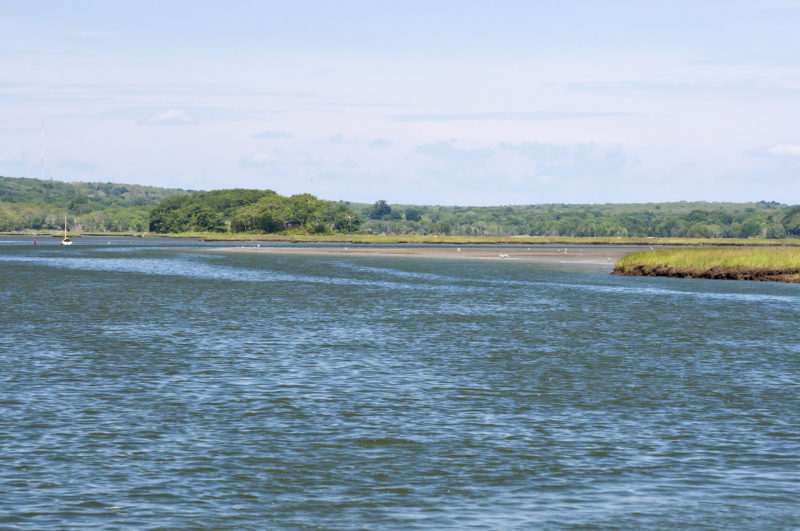Coalition, Westport Fishermen’s Association file notice of intent to sue EPA for failure to approve Westport River nitrogen pollution cleanup plan
The Coalition and the Westport Fisherman’s Association (WFA) have filed a 60-day notice of intent to sue the U.S. Environmental Protection Agency (EPA) under the federal Clean Water Act for its failure to approve or disapprove a Total Maximum Daily Load (TMDL) for the Westport River: a nitrogen pollution cleanup plan that has been in the works for 15 years.

The Westport River suffers from too much nitrogen pollution from home septic systems, which can lead to cloudy water and loss of habitat for fish and shellfish.
“Government inaction is literally choking the life out of the Westport River,” said Coalition President Mark Rasmussen. “The EPA has been on notice for 15 years now that the Westport River is in trouble, but the situation has gotten worse every year. It’s time to get moving with nitrogen cleanup action in Westport, and we’re not going to just stand by and watch government agencies stall that work any longer.”
TMDLs are a critical tool to reduce nitrogen pollution, the greatest long-term threat to the health of Buzzards Bay. These state-set pollution limits define the amount of nitrogen that waterways such as the Westport River can handle while still maintaining clean water standards.
The Westport River was placed on the state’s “dirty waters list” due to nitrogen pollution in 2002. It then took 15 years for the Massachusetts Department of Environmental Protection (MassDEP) to develop and submit a Westport River TMDL to the EPA for final approval. That happened on February 10 of this year. According to the Clean Water Act, the EPA is required to either approve or disapprove the TMDL within 30 days. That 30-day review period expired on March 12.

If salt marsh losses continue at the accelerated rate observed during the past 15 years, the Westport River’s marsh islands could disappear within 15 to 58 years.
For the past 25 years, the Coalition has been documenting the steady decline of the health of the Westport River through water quality data collected as part of its Baywatchers monitoring program. Last month, the Coalition and WFA released a report showing that the Westport River has lost nearly half of its signature salt marsh islands during the past 80 years. Nitrogen pollution is increasingly being identified as a cause of salt marsh losses along the East Coast.
“The Westport Fishermen’s Association has been watching the ‘can being kicked down the road’ on this issue for too long and has been advocating for the implementation of measures to begin to turn the effects of this problem around,” said Westport Fishermen’s Association President Jack Reynolds. “The evidence of the ongoing degradation of the resources that we all value is very clear.”
Once approved, the Westport River TMDL will set a course for action to restore clear water, abundant eelgrass beds, and healthy marine life by defining exactly how much nitrogen must be removed. This plan resulted from a lengthy development process that included two public meetings in Westport over the past year, during which attendees overwhelmingly expressed support for taking action.
The proposed Westport River TMDL calls for 71% of the needed nitrogen reductions to come from improvements to home septic systems, which are the largest source of nitrogen pollution to Buzzards Bay. Even properly functioning Title 5 septic systems – which most homes in Westport use to treat waste – aren’t designed to remove nitrogen from wastewater.
On Cape Cod, where many TMDLs are in place, local towns have benefitted from increased access to grant funds, wastewater planning assistance, and financing for improvements to reduce nitrogen to waterways. But the longer it takes to issue these pollution limits, the worse the problem gets – and the more expensive it is for communities like Westport to solve it.
Stay updated on this issue and be the first to know the latest news about the Westport River TMDL by subscribing to our newsletter (below) and following us on Facebook.